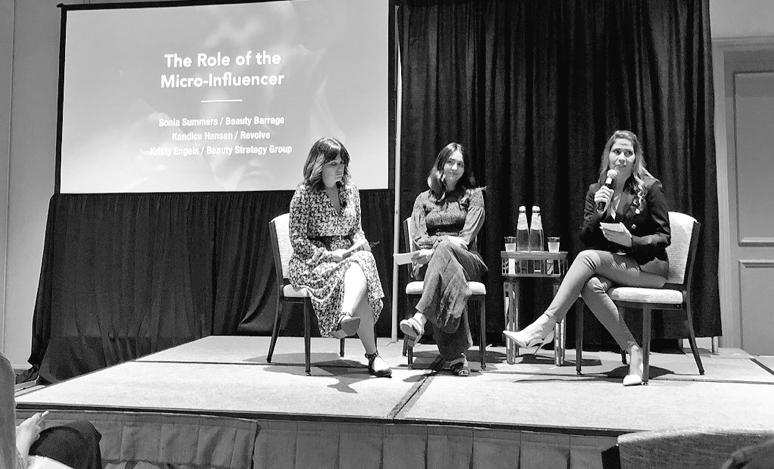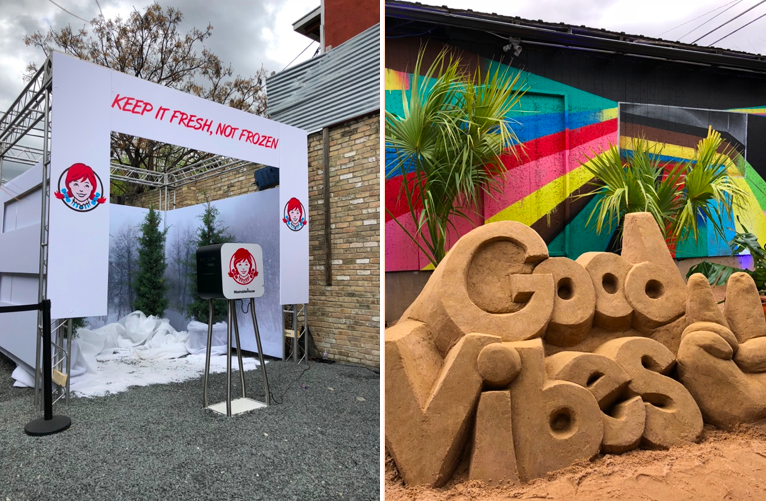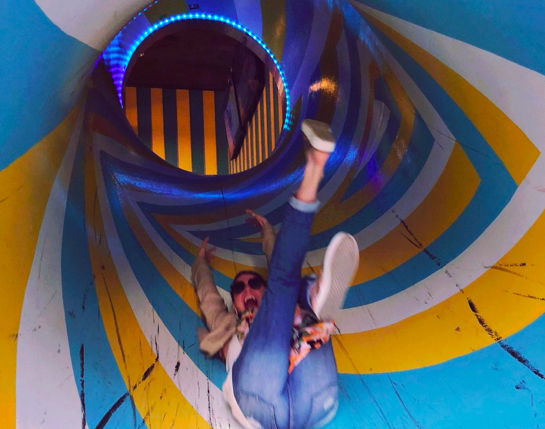In March, CBC headed to Austin, TX where we were immersed in 5 days of marketing panels, discussions, experiential brand activations, events, and more! We like to think of it as Disney World for digital marketing professionals. Our V.P. of Brand Integration, Robin Mack, shared her experience and some key learnings from this year’s 2018 SXSW Interactive conference.

Robin tests out the hot seat at Bumble’s activation all about female empowerment.
As a founder of CBC’s SIDEBAR Studios, I’ve been in the trenches researching all aspects of content marketing. Where it’s going and how we can help our clients succeed in this area. As a first-time goer at SXSW, it was incredibly validating to hear industry perspectives on the importance of content, visual storytelling and the rising role of micro-influencers in today’s marketing landscape. All things we are preaching at CBC.
I’ve outlined my key takeaways from lectures featuring incredible speakers from brands such as Revolve, Kate Spade, Instagram, William Sonoma, CNN and so many more.
- Influencers have solidified their place as a highly impactful way to introduce and convert customers. A shift to the micro-influencer is where brands are seeing the highest engagement. These are influencers with >50K in followers. They are experts and advisors in their field and have greater than 20Xs the number of conversions than “celeb” influencers.

Revolve and Beauty Barrage talked about the power of micro-influencers.
- Visual storytelling is driving ROI and science supports it.91% of audiences prefer visual content to long-form text. Visuals transmit to the brain 60,000 times faster than text and increases comprehension by 89%. So, if we told you, audiences only read 20% of the content delivered to them, you better have strong visuals (photo & video) for them to retain a good understanding and positive first impression of your brand. Therefore, a narrative through visual storytelling (i.e. video) is the most impactful way to connect with consumers. Industry best practice suggests pushing out 12-14 types of visual content pieces per campaign.

Photo 1: When Twitter House encourages bathroom selfies, you comply. Photo 2: The Bose activation was taking visual storytelling to the next level with VR sunglasses that trigger sound based on what you’re seeing.
- Take a channel-specific approach to reach your audience. Instagram vs. YouTube vs. Facebook speak to customers in different ways and cater to different engagements. Create and optimize content for each channel to effectively engage consumers and hit successful metrics. For example, Instagram Stories is a place to be more real and vulnerable whereas YouTube is a place for higher production and entertainment.

Photo: Kate Spade’s team showed how they customize their content strategy for each channel. Like these puppy social sharables only lived on Facebook to promote click-throughs to product.
- Audiences want real.Engagement spikes when brands act authentic and show vulnerability. Content does not need to be overly produced or perfectly curated. Transparency goes a long way with consumers and increases brand affinity. When you use influencers, conversion happens when they are allowed to creatively collaborate with brands and drop the branded script. Allowing this type of creativity produces novelty which engages the brain and stirs emotion in the mind of the consumer; emotion ignites the memory solidifying your brand impression.
These insights substantiate that in our ever-evolving jobs as marketers, content is critical. I’d even go as far as calling content king in a mixed bag of marketing.
Overall, the conference reminded us that it’s so important to take time away from our incredibly busy marketing jobs for personal and professional growth. In every lecture, I found myself learning new things and it was truly invigorating and inspiring.
Check out some more photos from our SXSW adventure…





